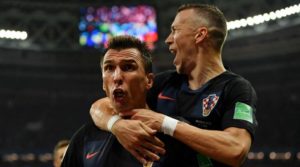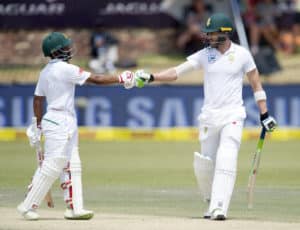Ottis Gibson must continue to experiment with the aim of developing all-rounder options before the 2019 World Cup.
Gibson could not have enjoyed a more emphatic start to his tenure as far as results are concerned. South Africa beat Bangladesh by 333 runs in the first Test, and then by an innings and 254 runs in the second. They hammered the Tigers by 10 wickets in the first ODI, by 104 runs in the second, and then by 200 runs in the third.
Some perspective, of course, is needed when assessing the Proteas’ individual performances, as well as those of the collective.
Bangladesh currently sit at ninth in the Test rankings and at seventh on the ODI ladder. Their inexperience about the local conditions hampered their ability to compete in recent games. Their bowlers failed to pressure or even contain South Africa’s star batsmen. Bangladesh brought a knife to a gunfight, and were duly obliterated.
So what did Gibson and company actually learn from the ODI series against Bangladesh?
For starters, the Proteas were nowhere near their best with the ball. They put down too many catches in the field. The standard of the ground fielding left a lot to be desired.
Gibson had little choice but to experiment across the three matches. Dale Steyn, Morne Morkel, Vernon Philander, Chris Morris and Wayne Parnell (for the last two ODIs) were all unavailable due to injuries. Several uncapped players were brought into the squad, while a couple of fringe players were given further opportunities to develop.
The Tigers enjoyed some success against the less-experienced Proteas bowlers in the first two matches of the series. In Kimberley, Dane Paterson went for 69 runs in nine overs, and Andile Phehlukwayo 60 in 10. Paterson may have finished with more than one wicket in Paarl – and better figures than 1-67 – if his teammates had not put down a couple of catches across his nine overs.
Phehlukwayo bounced back in the second match to claim career-best figures of 4-40. This performance, as well as that of debutants Aiden Markram and Wiaan Mulder in the third ODI, should encourage Gibson as the team grows in depth ahead of the next World Cup.
The Proteas’ batting let them down at the 2015 global tournament and at the more recent Champions Trophy. Subsequently there’s been an admission that the ODI side lacks balance and that one or two all-rounders will have to feature if the Proteas are to claim that elusive World Cup title in 2019.
Phehlukwayo has come a long way over the past 13 months. The 21-year-old has averaged 34.50 with the bat over his 20 ODIs. His big hitting at the death got the Proteas over the line in matches against Australia and New Zealand. His bowling is a work in progress.
Markram has been tipped as a future Proteas captain, and there may been a temptation to hand him the limited-overs reins while Faf du Plessis recovers from a back injury. Markram impressed on ODI debut, scoring 66 with the bat and taking 2-18 with the ball.
Mulder, who is only 19, took 1-32 in eight overs in his first start for the Proteas. He is another who could develop into a valuable all-rounder down the line.
Morris, Parnell and Philander should all be available for the ODI series against India in early 2018. That series should reveal where the Proteas are at present, and exactly how much they have to work on before the 2019 World Cup.
Gibson may need to balance the drive to win all those matches against India with the need to develop two or three outstanding all-rounder options. It will be interesting to see how much faith he places in more established players like Parnell and Farhaan Behardien – who, to be fair, haven’t contributed consistently enough over their respective careers to be spoken about as genuine all-rounders.
Parnell has taken 94 wickets at an average of 29.12, and hasn’t played many innings of substance (508 runs at an average of 21.16). Behardien has scored 1073 runs at an average of 31.55, but hasn’t made much of an impact with his medium pacers (he’s only been used as a bowling option in 35 of his 58 matches, and has an average of 51.35 as well as an economy rate of 5.76).
Morris, Phehlukwayo, Dwaine Pretorius, Markram, Mulder and others must be measured against India in early 2018 if they are going to be considered for the 2019 World Cup. It’s in that series where Gibson will have the opportunity to find solutions to his all-rounder problem.
Photo: Anthony Au-Yeung/Getty Images





